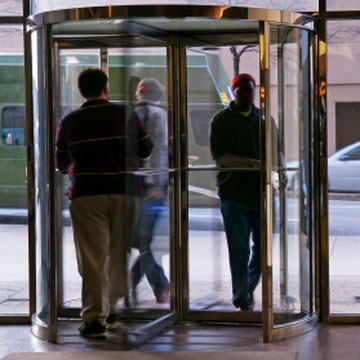A significant obstacle to the development of many modern companies is the high staff turnover. Annual losses in some organizations reach 90% of the state. The search for new employees, adaptation and training are always resources. Especially in industries where special skills and qualifications are critical.
High turnover means low productivity, lack of a well-coordinated work team and corporate spirit. How to calculate the turnover rate? How to analyze its indicators and find the reasons?
Staff turnover - “revolving door index”

Staff turnover is movement human resources from state to state enterprise. The “revolving door index”, or “fluidity,” describes the characteristics of human resource management in a particular organization.
In general, the company calculates the general turnover, private - by departments or groups of employees who have a common professional or gender-related characteristic.
Dismissals due to conscription, retirement, etc. relate to background turnover. Excessive is caused by employee dissatisfaction with their workplace (active turnover) or leadership of a particular employee (passive).
Kinds
| Internal staff turnover | External fluidity | Natural (3-5%) | Excessive (more than 15%) | Potential (hidden) |
| Rotation, movement of labor within the company | The movement of labor between enterprises, firms from different industries | A small percentage of employees who for various reasons leave the organization | Significant loss of labor from the state | Workers do not quit externally, but internally move away from the organization. When the opportunity arises, they change jobs |
Natural fluidity is useful for the organization, contributes to the gradual renewal of the team, the influx of new energy and ideas.
High staff turnover impedes cohesion, the establishment of strong ties and the formation of an effective team. Morale is deteriorating and the motivation of the whole team is falling.
Who! Where? When? The reasons

The development of measures aimed at securing personnel begins with finding out the specific reasons for the dismissal. It is necessary to collect information not only about the motives of employees leaving at their own request, but also violating labor discipline.
The reasons for staff turnover are varied and lie not only in unsatisfactory working conditions, wages, but also in illiterate selection and management of personnel.
- In almost 90% of cases, layman recruitment leads to dismissal, the desire of the employer to quickly find someone for a vacant position, and the applicant to get any job. Poor informing when hiring a new employee leads to a similar result.
- Dismissal during trial period occurs with poor adaptation. In its absence, not everyone leaves immediately, a hidden decision to leave an employee can “bear” in himself years.
- As Robert Sutton said: “For the most part, people are moving away from executives, not companies.” Disagreement with management and management methods may lead to dismissal. A clear briefing reduces staff turnover.
- Lack of opportunities for development, training and career growth. A common reason is dissatisfaction with their activities, profession.
- Unfavorable moral and psychological climate.Dismissal after another, relative.
- The incompetence of the employee, the inability to perform their functions in the team becomes the cause of dissatisfaction with the leadership and dismissal.
Staff turnover calculation: formula and standard

An indicator of the movement of labor is the turnover rate. The formula for calculating it is the ratio of the number of those who quit to the average number of employees for a certain period. The coefficient is expressed as a percentage.
| Staff turnover rate. Formula | |
| Kt = (Chuszh - Chus) / Chs ×100 | CT - the coefficient of turnover of labor;
Chuszh - the number of employees resigning of their own free will; Chus - the number of employees laid off at the initiative of management; Hs - the average number of employees (calculated as the arithmetic average of the number of employees at the beginning and at the end of the period) |
The percentage of staff turnover is compared with the standard, which is determined taking into account the specifics of the organization, labor market and other factors. It is important not only to calculate the fluidity, but also to track the dynamics of the indicator, especially the sharp jumps.
The employee turnover rate is recommended to be calculated for each unit, compared with previous periods and to analyze the dynamics.
Decryption
Theoretically, the standard should be 3-5%, which indicates a low or natural level of fluidity. In practice, the norm is considered an indicator from 10 to 12%, and for large enterprises - 15%.
Pay attention to a high percentage of turnover: for small organizations - more than 12%, for large companies - more than 15%. This is a signal of the presence of deficiencies in the personnel management system, but not always. Exceptions may be associated with the characteristics of the enterprise, for example, high fluidity due to seasonal work.
What factors influence yield rates?

Each company has its own turnover standards, taken into account when conducting personnel analysis. The optimal and high coefficient value is established taking into account the following factors.
- Industry specifics and seasonality.
- The location of the enterprise, for example, the staff turnover at the enterprise in a megalopolis is higher than in a small city.
- The level of organization competitiveness in the labor market.
- Features of the enterprise, its personnel policy, hiring and dismissal systems.
- Category of employees. The turnover rate of administrative personnel is lower than linear.
Analysis technique
Taking into account the peculiarities of the enterprise, an analysis technique is selected. Before you analyze staff turnover, you must determine:
- the analyzed period (year, quarter, etc.);
- list of indicators that need to be calculated;
- how to perform the calculation (by month, quarter, for the whole organization, by department or for certain groups of employees).
The staff turnover formula and other indicators reflect only the general picture of the team and the resigned employees. The information received does not provide answers to questions about where they worked, how long, why they quit, and what losses this will cause for the organization.
Staff turnover is recommended to be analyzed for a certain period by groups of employees. For example, in three months and taking into account the speed of their dismissal from the organization. Calculations should be entered in a special table.
| Indicators | The total number of resigned | The percentage of quitters | Flow rate | Other indicators |
| 1st quarter data | ||||
| 2nd quarter | ||||
| 3rd quarter | ||||
| etc. |
Studying the dynamics of personnel turnover indicators is of great importance, as it allows you to see the direction of change. The analysis of turnover in the organization and departments as a whole helps to identify the impact of working conditions and organization of production on these changes.

Flow Rate Indicators
During the analysis, several indicators can be calculated.
| Indicator | Staff turnover. Calculation formula | Indicator value |
| Turnover ratio (Cob) | Cob = U / P
Y is the number of those dismissed; P - the number of accepted |
It shows how intensively the staff is changing, whether it appreciates the opportunity to work in the organization |
| Stability coefficient (KST) | East = 100 / S × n
n is the number of employees working at the enterprise for the period; S - the average value of the number of staff |
Demonstrates how effective the selection and adaptation of employees, whether they had an impact on staff turnover. The calculation is made for any period and depends on the industry |
| Stability Index (Is) | Is = K2 / K1 × 100
K1 - the number of employees hired a year ago; K2 - the number of employees for a year or more |
Shows which part of the staff is accepted and works in the organization for one year. |
| Intensity coefficient (Whale), norm = 1 | Whale = Kt that / Ktek
CT that - the coefficient of turnover of the department; Ktek - the coefficient of turnover in the whole company |
Staff turnover by units. If for a specific department, the value of Keith is more than 1, then it means that measures to reduce the turnover should be introduced in it. |
| Coefficient of potential fluidity (KPT) | Cpt = 100 / N × n
n is the number of employees who may change jobs during the year (identified during the survey); N - the number of respondents |
Reflects how effective the motivation system is. If Kpt is higher than Ktek throughout the firm, then motivation is absent or ineffective |
| Additional yield index (DIT) | DIt = Kuv 1 / S × 100
Kuv 1 - the number of adopted and dismissed over the past year; S - the average value of the number of staff |
Demonstrates turnover among short-term employees |
In addition, a coefficient is calculated that reflects half the term of the total duration of the employee’s stay at the enterprise. It allows you to find out what period of time passed before 50% of the department or other group of employees who came to the organization at the same time left it.
HR strategy

Increasing the value of work for staff is an essential element of an HR strategy. When an employee is satisfied with the corporate culture, the psychological climate in the team, the remuneration system and other factors, then he remains in the organization. Thus, managing labor turnover is nothing more than managing the value of an enterprise for employees.
The staff turnover problem will never disappear, but it can be reduced. Standard management approaches are gradually becoming a thing of the past. A flexible and individual approach to the search and preservation of labor is gaining strength.
The fatal mistake of many employers is a standard approach to all employees, therefore training programs do not contribute to the achievement of goals.
7 factors that reduce staff turnover
- Decent pay, bonus system. Variable and constant parts of wages in the optimal ratio, taking into account the characteristics of the region. Multiplication by the coefficient and allowances for overfulfillment of the plan. Overpriced plans are unacceptable.
- Lack of a fine system. As practice shows, the deprivation of bonuses reduces loyalty and trust in the organization. A reprimand or demotion is perceived as a fairer punishment, as opposed to a fine.
- Optimal mode of work, vacation schedule. An employee who manages to relax works more fun and efficiently.
- Clear goals for employee development and conceptual approaches to training. Personnel rotation, career growth, development and design work. All in order to make the work promising and interesting.
- Protection from arbitrariness and responsibility of leaders. For example, phrases on the part of the leadership: “so that you are not here tomorrow” or “if it doesn’t suit you, we don’t keep anyone” are destructive for any organization. Such statements reduce the value of the workplace.
- Continuous leadership training. The employee’s departure is the result of mistakes by superiors: illiterate interaction, poor goal setting, fuzzy briefing.
- Individual approach. Good working conditions can be offered by many employers.But an individual approach to employees is becoming more and more relevant: the ability to change the schedule, free time, prospects, and the pay scheme.
Conclusion
Most Russian businessmen and executives to this day exist within the framework of stereotypes according to which success in business depends on close and understandable things - administrative resources, personal connections, etc. As a result, human resource management, in fact, is a critical management function seriously.
The solution to such a problem as reducing employee turnover, requires careful and competent management approach the staff. Its essence was well expressed by James Goodnight: “Every evening 95% of my firm’s assets go home. My task is to create such working conditions that every morning all these people have a desire to come back. The creativity they bring to the corporation shapes our competitive advantage. ”









